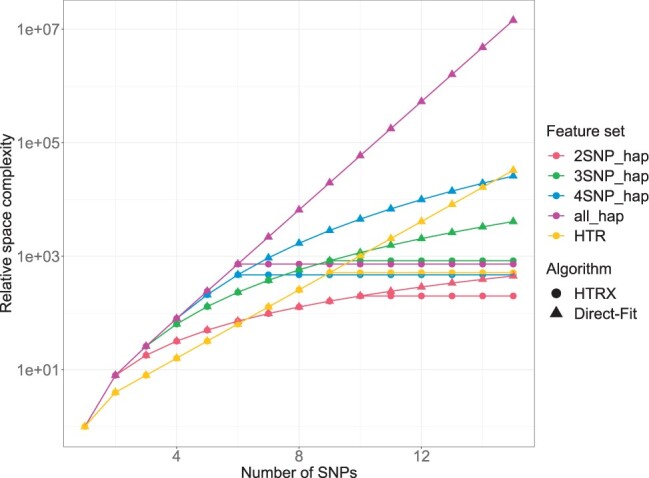Fig. 1.

‘Cumulative HTRX’ bounds space complexity. Comparison of space complexity for Algorithm ‘Direct-Fit’ (all-feature multivariate regression) and ‘HTRX’ on different feature sets for both linear and logistic regression models. Feature set specifies the maximum number of features that can interact using ‘SNP’, ‘2SNP_hap’, ‘3SNP_hap’, etc., and ‘all_hap’ represents the all the possible haplotypes, while ‘HTR’ uses templates that interact between all features with no ‘X’ in the template. The space complexity for linear and logistic regression models is approximately proportional to the number of the input features, which is suggested to be below 1000 for ‘HTRX’. Algorithm ‘Direct-Fit’ and ‘HTRX’ begin with the same number of features . When the number of SNPs increases, the number of features increases exponentially. ‘HTRX’ uses Algorithm 3 ‘Cumulative HTRX’ to reduce the space complexity significantly. When using haplotypes with at most two or three SNPs (‘2SNP_hap’ and ‘3SNP_hap’), or all the SNPs (‘HTR’), ‘HTRX’ allows the region spanning more SNPs while keeping the relative space complexity below 1000
